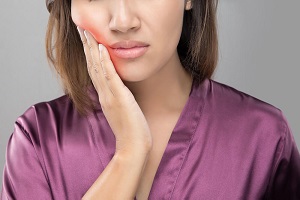
Toothache is any pain in or around one or more of your teeth. It can range from a mild annoyance to agonizing discomfort, depending on the cause and the damage done to the tooth. Your obvious solution is to see a dentist as soon as possible, but that isn’t always realistic when you live in Scarborough. While most dentists schedule their appointments at least two to three weeks out, some practices make a point of keeping one or two slots open each day for emergency dentistry. Whatever the length of time you have to wait to get your toothache seen to, these tips will help you reduce the pain in the meanwhile.
Trust Dr. Michael Handler's Expertise in Treating Tooth Pain
Dental Emergency ServicesThe first step in getting relief from your toothache is to reduce inflammation, and there are two accepted ways of doing this:
Reduction of the inflammation will provide relief from the pain and help to give the toothache a form of first-aid. If the cause of the problem is dental trauma resulting from sports or a fall, they’ll have the added benefit of helping to reduce that pain, too. You can repeat these measures every few hours to keep the pain levels under control.
After the cold pack, you can apply heat therapy in the form of a heat pack such as a warm, wet cloth or a moist heating pad. Heat also helps to reduce the discomfort caused by a toothache, because it increases the flow of blood to the area which reduces any buildup of fluid in the tissues. Temperature therapy involves alternating heat and cold to get the full benefit of both.
While most toothaches won’t actually heal without addressing the cause of the problem, you can soothe the area and promote healing of the tissues by rinsing your mouth with warm salt water. Contrary to expectations, the salt doesn’t “burn” an open wound, it actually soothes it immediately as well as providing some anti-bacterial effects.
Mix a teaspoon of clean salt with a quarter cup of boiling water and stir until the salt is dissolved. Add another quarter cup of cold water to make the temperature bearable, then take a mouthful of the mixture. Swish it gently around your mouth and try to hold it in position over the toothache for a couple seconds. Spit it out and repeat immediately.
If you need to rinse with clear water afterwards to get rid of the salty taste, then be sure not to use very warm or very cold water or your damaged tooth might react painfully.
Many people swear by the use of herbal therapy, and the alternative methods used in treating toothache include the use of clove oil and peppermint infusions.
Clove oil has been a traditional remedy for a long time, because the main chemical compound in cloves is eugenol, which is a naturally-produced anesthetic. If you get it on sensitive gum tissue it can actually make your discomfort worse, however, so it’s important to use clove oil carefully. You can either put two drops of oil on a cotton ball and hold it against the aching tooth, or you can hold a whole clove there instead. Bite down gently on the clove to release the oil and keep it in place until the pain reduces.
Peppermint tea tastes delicious and has some ability to anesthetize a small area. Add a teaspoon of dried peppermint leaves to a cup of boiling water and allow it to steep for half an hour. Then swish it around your mouth as you would with warm salt water. Do this a couple of times, and then drink the rest of the cup to help you feel better generally.
Research suggests acupressure might reduce toothache pain by causing your body to release endorphins. You’ll have to find a reputable practitioner or learn how to do it yourself to use this option, but an internet search could help you find the key pressure points on the body that are linked to oral discomfort. Regardless how effectively you are able to treat toothache pain, the only real relief is to see your dentist and address the cause of the problem, so don’t waste any time making an appointment.
For more information on treating toothache with dental care, please schedule your visit to our dentist in Scarborough at 416-267-4661, or click here to book online.
Do you ever feel nervous about dentist appointments? Rest assured: we cater to nervous and anxious patients in a gentle and considerate manner. Call us now to schedule a free consultation!